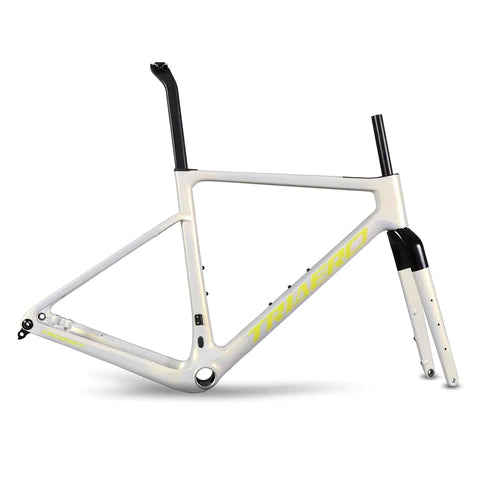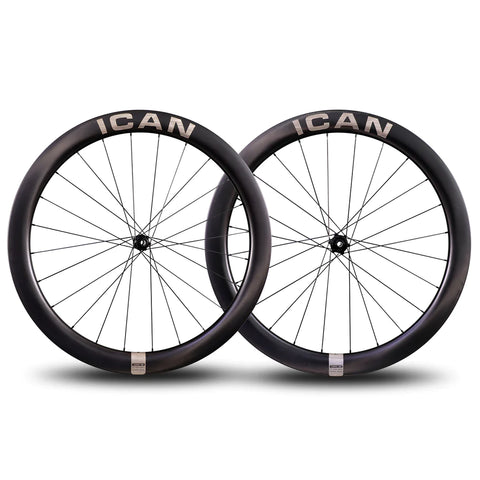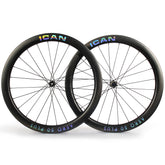Everything you need to know about the UCI
When you see a UCI stamp on ICAN wheels, you may wonder what it means or who the UCI is. In this guide we will explain what the UCI is and what it does.
After discussing the UCI in detail, we will explain the benefits of UCI certification and provide information on where to find the certification data. Finally, you will find a useful guide that shows you which of our carbon fiber bikes have a UCI certificate.
What is the UCI?
The Union Cycliste Internationale is the global umbrella organization for all cycling disciplines. From its headquarters in Aigle, Switzerland, it oversees national cycling associations worldwide. The organization was founded on June 14, 1900 to replace the International Cycling Federation (ICA).
The change was made because several other countries were upset that ICA rules allowed Britain to send teams from all of its countries. The voting rules were also interesting.
In the past the votes were allocated to the velodromes. If a country was a UCI member but did not own a velodrome, it had no voting rights. However, if a country had 18 velodromes, like France, it had 18 votes. The UCI is responsible for Olympic cycling and used to have two sub-organizations for amateur racing when the Olympics were still an amateur sport.
In 2005, the UCI created the ProTour, considered one of the most significant changes in the cycling world. The ProTour license is awarded to 20 teams who must take part in all races listed on the calendar. Originally all races were held in Europe, but from 2007 the UCI began sanctioning races worldwide.
One of the most significant rule changes that affected road cycling and the UCI resulted in constant disagreements between the UCI and the Grand Tour organizers. Additionally, the UCI has introduced regulations that may affect the cycling products you purchase. These rules mean that in certain situations you can buy a higher quality bike than what the UCI allows professional cyclists to buy.
The UCI cycling rules
The weight regulation for bicycles is one of the most discussed topics among cyclists. It has become an annual tradition for magazines to publish articles speculating about whether the 14-pound (6.8 kg) bike weight limit will be changed. This weight limit was set in the Lugano Charter of 1996.
In the past, bike manufacturers had to ensure that their bikes were not only light but also strong. Thanks to technical advances and refinements in the construction of carbon fiber, it is now possible to build even lighter bikes that are still safe. This means that you can buy a bike that is easier to ride uphill, even if you are not a professional cyclist.

What about the AERO rules?
It's worth noting that the UCI has rules on aerodynamics. There has been a lot of discussion in the past about the 3:1 rule, which stated that the length of the frame tubes could not exceed three times their width. This rule was abolished about two years ago.
What's interesting is that the aero bikes have remained largely unchanged. This is because the frame tubes must fit into an 8cm frame, which prevents the use of fairings or front triangle padding to improve sailing characteristics. Essentially the rule remains the same, just with different wording.
The integration has been used on our new bikes, like the A9, to save watts and improve aerodynamics.

UCI bike certification
It is important to understand that the UCI is responsible for setting the rules that all cycling organizations, including us, must follow. The UCI has set up an Equipment Commission to promote innovation and technology in cycling. This commission represents a new approach by the UCI in this regard.The UCI (Union Cycliste Internationale) has created a new commission to solve the problem of inconsistent interpretation of the Lugano Charter by the commissioners during the races. This discrepancy led to numerous disputes and disagreements. To solve this problem, the UCI decided to introduce a UCI certified sticker.
This sticker was originally designed for bicycles but can now be used on various parts. Please note that the wheels are not included in the testing process. UCI testing confirms that the wheels are safely manufactured and can be used in all UCI-sanctioned events. Please note that non-certified wheels cannot be used in UCI certified events.

Die UCI-Radtests

The vertical drop test for wheels involves attaching the wheel to a stand without tires. The tire is unmounted because it can reduce the impact force and prevent damage to the wheel. To carry out the test, a rubber pad with a hardness of 50A is placed on a steel block. The steel block and rubber pad are then dropped onto the wheel. It is important to note that the rubber pad is not damaged during testing.
The wheel must be hit perpendicular to the valve hole. Compliance with these regulations must be sufficiently demonstrated and the test images should be taken from different angles.
In order for a bike to pass the test, it must meet the following conditions
- No visible cracks or delaminations
- No change in side profile or side runout of more than 1.0 mm
- No change in radial profile or runout of more than 1.0 mm
The UCI certification not only makes life easy for the commissioners, but also gives you as a consumer a feeling of security. We chose full UCI certification because we wanted to show you that we want to be the leading Chinese supplier of carbon fiber road wheels.
To learn more about the UCI guidelines , click on the highlighted text.
What about ICAN products?
Our carbon fiber wheels and frames are now UCI certified.







